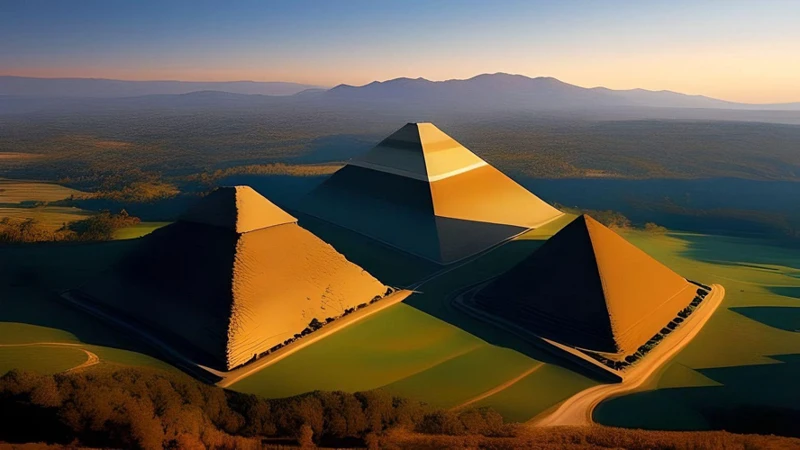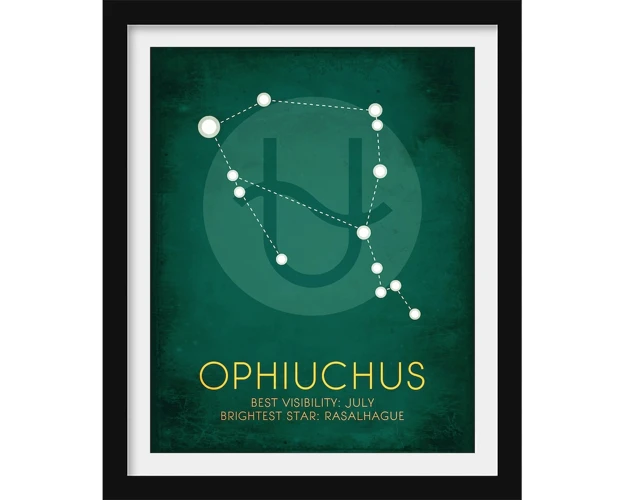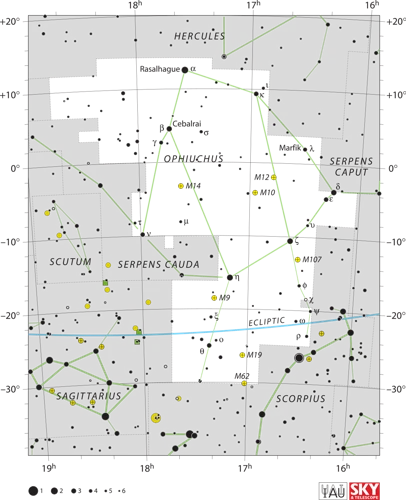The Aztec city of Tenochtitlan was a marvel of architecture, design, and urban planning that has captivated historians and archeologists for centuries. Nestled in the heart of modern-day Mexico City, Tenochtitlan was the capital of the Aztec empire and thrived from the 14th to the 16th century. This awe-inspiring metropolis was built on an island in the middle of a lake and featured elaborate temples, grand palaces, intricate canal systems, and breathtaking gardens. The city’s layout was meticulously planned, with clear divisions between sacred and secular spaces. The purpose of this article is to explore the fascinating history, urban planning principles, architectural marvels, aesthetic and symbolic elements, and lasting influence of Tenochtitlan. Join us on a journey to uncover the secrets of this ancient city and discover the legacy it has left on modern-day Mexico City.
Contents
- 1. Historical Context
- 2. Urban Planning Principles
- 3. Architectural Marvels
- 4. Aesthetic and Symbolic Elements
- 5. Legacy and Influence
- Conclusion
-
Frequently Asked Questions
- 1. What were the main accomplishments of the Aztecs?
- 2. How did the Aztecs choose the location for Tenochtitlan?
- 3. What role did the Triple Alliance play in the development of the Aztec empire?
- 4. What were the sacred and secular spaces in Tenochtitlan?
- 5. How did the canal system and causeways contribute to the urban planning of Tenochtitlan?
- 6. What was the significance of the Templo Mayor in Tenochtitlan?
- 7. What types of structures were found in the residential areas of Tenochtitlan?
- 8. What were the aqueducts and aquatic gardens used for in Tenochtitlan?
- 9. What were the symbolic elements found in the art and sculptures of Tenochtitlan?
- 10. How did the legacy of Tenochtitlan influence later Mesoamerican civilizations?
- References
-
Frequently Asked Questions
- 1. What were the major architectural features of Tenochtitlan?
- 2. How did the Aztecs plan and design their city?
- 3. What was the significance of the Triple Alliance in the development of Tenochtitlan?
- 4. What is the importance of the Templo Mayor in Tenochtitlan?
- 5. How did the Aztecs incorporate natural resources and materials into their architecture?
- 6. What impact did Tenochtitlan have on later Mesoamerican civilizations?
- 7. What role did the canal system and causeways play in Tenochtitlan’s urban planning?
- 8. How did the layout of Tenochtitlan reflect the Aztec worldview?
- 9. How does modern-day Mexico City reflect the legacy of Tenochtitlan?
- 10. What can we learn from the architecture and urban planning of Tenochtitlan today?
- References
- Read More
1. Historical Context

The historical context of Tenochtitlan is crucial to understanding its significance and marvels. The rise of the Aztecs, a Mesoamerican civilization, occurred during the 14th century. They were originally a nomadic tribe who eventually settled in the Valley of Mexico. With strategic alliances and military conquests, they established themselves as a dominant force in the region. In 1325, the Aztecs founded the city of Tenochtitlan, which became their capital.
The Aztecs chose the location carefully, as they believed it fulfilled a prophecy from their patron deity, Huitzilopochtli. According to legend, their god instructed them to settle in a place where they would find an eagle perched on a cactus, devouring a snake. This iconic image is still prominently depicted on the Mexican flag today. The vision became a reality when the Aztecs discovered an eagle sitting on a cactus on an island in Lake Texcoco, surrounded by marshes and mountains. The island’s natural defenses made it an ideal location for their settlement.
The Aztecs encountered other advanced civilizations in the region, such as the Toltecs and the Mayans, whose influence can be seen in the art and architecture of Tenochtitlan. The city grew rapidly over the years, with a population that eventually surpassed 200,000 people. It became a vibrant center of trade, commerce, and religious practices. The Aztecs developed a complex social and political structure, with a ruling emperor and a powerful priesthood. This context sets the stage for the incredible urban planning, architectural marvels, and symbolic elements that we will delve into in the following sections. (source: source)
1.1 Rise of the Aztecs
The rise of the Aztecs is a fascinating chapter in Mesoamerican history. Before becoming a dominant force, the Aztecs were originally a nomadic tribe known as the Mexica. They migrated from the north and settled in the Valley of Mexico in the 13th century. Here, they encountered other civilizations, such as the Toltecs and the Mayans, who influenced their cultural and religious practices. The Mexica adapted and absorbed elements from these advanced societies, laying the groundwork for their own rise to power.
Through strategic military alliances and conquests, the Aztecs expanded their territory and established control over surrounding regions. They formed a Triple Alliance with two other city-states, Texcoco and Tlacopan, which allowed them to centralize power and accumulate resources. This alliance, known as the Aztec Empire, became a formidable force in the region.
One key figure in the rise of the Aztecs was the emperor Itzcoatl. Under his rule in the 15th century, the empire experienced significant territorial expansion and political reforms. Itzcoatl laid the foundation for the Aztecs’ imperial structure and helped consolidate power in the hands of the ruling class. His reign was marked by military campaigns, educational reforms, and the codification of laws.
By the early 16th century, the Aztecs controlled a vast empire, stretching from the Gulf of Mexico to the Pacific coast. Their capital, Tenochtitlan, became a thriving city and a center of commerce and religious practices. The rise of the Aztecs was a testament to their resilience, adaptability, and military prowess, setting the stage for the remarkable civilization and architectural wonders of Tenochtitlan. (source: source)
1.2 Founding of Tenochtitlan
The founding of Tenochtitlan marks a pivotal moment in Aztec history and the establishment of their grand capital. According to Aztec mythology, the journey that led to the city’s founding began when their god Huitzilopochtli appeared to the Aztecs and commanded them to settle in the place where they find an eagle perched on a cactus, devouring a snake. This vision became a reality when the Aztecs discovered the eagle perched on a cactus on an island in Lake Texcoco. Encouraged by this divine sign, they began building their city in 1325.
Constructing a city on an island posed unique challenges that required innovative solutions. The Aztecs devised an intricate system of raised causeways and canals, allowing for trade and efficient transportation throughout the city. The creation of Tenochtitlan involved extensive land reclamation to accommodate the growing population and establish the architectural marvels that would come to define the city.
The Aztecs meticulously planned the layout of Tenochtitlan, dividing the city into four sections, each dedicated to a different deity. The center of the city housed the Templo Mayor, a magnificent temple dedicated to Huitzilopochtli and Tlaloc. Surrounding the temple were spacious plazas and ceremonial spaces, where the Aztecs performed ritualistic practices and celebrated religious festivals.
The founding of Tenochtitlan highlighted the strategic vision and determination of the Aztec people. Through their innovative urban planning and devotion to their gods, they transformed a small island into a thriving metropolis that would endure for centuries. The city’s legacy continues to shape our understanding of ancient Mesoamerican civilizations and their impressive feats of architecture and urban design. (source: source)
2. Urban Planning Principles

2. Urban Planning Principles
2.1 Triple Alliance
The urban planning of Tenochtitlan was greatly influenced by the Triple Alliance, a political and military coalition between the Aztecs and two other city-states, Texcoco and Tlacopan. This alliance allowed for the shared knowledge and resources of the three cities, resulting in a sophisticated urban plan for Tenochtitlan. The city was divided into four main sections, each representing a cardinal direction and associated with a specific deity. These sections were interconnected through a system of causeways, allowing for efficient transportation and trade. At the heart of the city lay the ceremonial center, with the Templo Mayor as its focal point.
2.2 Sacred and Secular Spaces
The urban planning of Tenochtitlan also emphasized the division between sacred and secular spaces. The sacred precinct, located in the ceremonial center, was dedicated to religious activities and rituals. It contained temples, altars, and religious structures, such as the Templo Mayor. The secular areas, on the other hand, were designated for residential, commercial, and administrative purposes. The residential areas were organized into neighborhoods, known as calpullis, which housed different social classes. Markets, known as tianguis, were bustling centers of commerce that offered a wide variety of goods.
2.3 Canal System and Causeways
One of the most impressive aspects of Tenochtitlan’s urban planning was its canal system and causeways. The city was built on an island in Lake Texcoco, and the Aztecs developed an intricate network of canals and waterways for transportation and drainage. These canals connected different parts of the city and were used for trade and transportation of goods. The causeways, known as calzadas, allowed access to the city and provided connections to neighboring settlements. The most famous causeway, known as the “Great Causeway,” connected Tenochtitlan to the mainland. This innovative urban design allowed for efficient movement of people and goods throughout the city, contributing to its thriving economy.
The urban planning principles of Tenochtitlan were shaped by the Triple Alliance, which facilitated the exchange of knowledge and resources among the Aztecs, Texcoco, and Tlacopan. The city’s layout emphasized the division between sacred and secular spaces, with the ceremonial center at its heart. The canal system and causeways were remarkable feats of engineering that facilitated transportation and commerce. These principles laid the foundation for the architectural marvels and symbolic elements that made Tenochtitlan a truly remarkable city.
2.1 Triple Alliance
The Triple Alliance was a crucial aspect of the urban planning and development of Tenochtitlan. This alliance was formed in 1428 when the Aztecs, along with the Texcoco and Tlacopan city-states, joined forces to create a powerful coalition. Under this alliance, Tenochtitlan gained access to valuable resources and skilled labor from its allies, which greatly contributed to the city’s growth and prosperity.
The Triple Alliance had a significant impact on the urban design and architectural layout of Tenochtitlan. The alliance members worked together to build an intricate network of causeways and canals that connected the island city to the mainland and neighboring territories. This elaborate canal system allowed for efficient transportation of goods, facilitated trade, and provided a source of fresh water. It also served as a defense mechanism, as the canals acted as barriers to protect the city from potential invaders.
The alliance also ensured the allocation of resources and manpower for the construction of monumental structures and public spaces. Together, they built imposing temples, palaces, ball courts, and marketplaces, showcasing the wealth and power of the Aztec civilization. The influence of the Triple Alliance can be seen in the grandeur and scale of these architectural marvels, which would not have been possible without the collaborative efforts of the three city-states.
2.2 Sacred and Secular Spaces
Sacred and secular spaces played a crucial role in the urban planning of Tenochtitlan. The Aztecs had a deep reverence for their gods and believed in the connection between the physical world and the divine. As a result, the city was designed with distinct areas dedicated to religious rituals and everyday activities. The central core of Tenochtitlan was dominated by the Templo Mayor, a grand temple complex that served as the spiritual heart of the city.
The Templo Mayor consisted of two massive pyramid-like structures, dedicated to the Aztec deities Huitzilopochtli, the god of war, and Tlaloc, the god of rain and fertility. These towering structures were adorned with intricate carvings, sculptures, and murals, depicting mythological scenes and religious symbolism. The Templo Mayor was a site of sacred ceremonies and sacrifices, including human offerings that were believed to appease the gods and ensure the well-being of the community.
Adjacent to the Templo Mayor were the Calmecac and Telpochcalli, two important educational institutions. The Calmecac was a prestigious school for the sons of nobility, where they received a rigorous education in Aztec religion, history, and administration. The Telpochcalli, on the other hand, was a military academy that trained young men for warfare. These institutions further emphasized the importance of education and religious indoctrination in Aztec society.
Outside of the religious core, Tenochtitlan was divided into distinct neighborhoods known as calpullis. Each calpulli had its own set of community buildings, including schools, markets, and communal gathering spaces. These areas served as the secular heart of the city, where daily activities, trade, and social interactions took place. The layout of the neighborhoods followed a grid-like pattern, with canals and causeways providing efficient transportation and irrigation systems.
The separation of sacred and secular spaces in Tenochtitlan showcased the Aztecs’ understanding of the importance of religion in their society, as well as their efficient urban planning. By dedicating specific areas for religious practices and communal activities, the city was able to function harmoniously while maintaining a deep connection to the spiritual realm. (source: source)
2.3 Canal System and Causeways
The canal system and causeways of Tenochtitlan were remarkable feats of engineering and played a crucial role in the city’s urban planning. The city was situated on an island in Lake Texcoco, and the surrounding marshes and water bodies made transportation a challenge. To overcome this obstacle, the Aztecs constructed an intricate network of canals which served as both transportation routes and drainage systems.
The canals were carefully designed to connect different parts of the city and facilitate the movement of goods and people. They were wide enough to accommodate large canoes, known as chinampas, which were used for transportation and trade. The canals were also used for the cultivation of chinampas, artificial islands made of mud and vegetation, which served as agricultural plots. The innovative chinampas system allowed the Aztecs to grow crops in a region with limited arable land.
In addition to the canals, the Aztecs built several causeways, or raised roads, that connected the island city to the mainland. These causeways were designed to withstand the weight of heavy traffic and the unpredictable water levels of Lake Texcoco. They were constructed using a combination of stone, wood, and compacted earth, ensuring their durability.
One of the most famous causeways was the Great Causeway of Tenochtitlan, which connected the city to the mainland in the west. This causeway was wide enough to accommodate multiple people walking side by side and had high walls on both sides to protect travelers from the water. The causeways not only provided a means of transportation but also served as symbolic pathways, connecting the island city to the outside world.
The canal system and causeways of Tenochtitlan were not only practical infrastructural elements but also had deeper symbolic significance. They represented the Aztecs’ close connection to water, which was essential for their survival and agricultural practices. The canals and causeways also showcased the engineering prowess of the Aztecs and their ability to overcome geographical challenges in creating a thriving and interconnected city. (source: source)
3. Architectural Marvels

The architectural marvels of Tenochtitlan showcased the ingenuity and skill of the Aztec civilization. One of the most prominent structures was the Templo Mayor, a massive temple dedicated to the Aztec gods Huitzilopochtli and Tlaloc. This temple stood at the center of the city and reached a height of around 148 feet. It was adorned with intricate carvings and sculptures, reflecting the rich symbolism and religious beliefs of the Aztecs. The temple was built in layers, with newer structures constructed on top of older ones. Excavations have revealed multiple stages of construction, offering a glimpse into the evolution of the temple over time.
The city also boasted grand palaces and residential structures, many of which were adorned with vibrant murals. These images depicted scenes from Aztec mythology, historical events, and everyday life. The murals were created using natural pigments, such as minerals and plant extracts, and they showcased the artistic and storytelling skills of the Aztec people. In addition to the temples and palaces, Tenochtitlan was known for its innovative aqueducts and aquatic gardens. The Aztecs developed an extensive system of canals and causeways that allowed for the efficient transportation of goods and people throughout the city. These waterways were adorned with floating gardens known as chinampas, where the Aztecs cultivated crops such as maize and flowers. The combination of impressive architecture, vibrant murals, and innovative water systems made Tenochtitlan a true marvel of its time. (source: source)
3.1 Templo Mayor
Templo Mayor, also known as the Great Temple, was the centerpiece of religious life in Tenochtitlan. The temple was dedicated to two important Aztec deities, Huitzilopochtli, the god of war and the sun, and Tlaloc, the god of rain and fertility. It stood at the heart of the city and was an architectural marvel, with its towering pyramidal structure and intricate stone carvings. The temple had two main shrines, one for each deity, which were accessed by steep staircases on the sides of the pyramid.
At the top of the Templo Mayor, the priests performed elaborate rituals that involved human sacrifice. These sacrifices were seen as necessary to appease the gods and ensure the well-being and prosperity of the Aztec empire. The temple complex also housed various other structures, including smaller pyramids, a ball court, and shrines. It was a site of pilgrimage and worship for the Aztecs and drew visitors from all over the empire.
The Templo Mayor was constructed in several stages, with new layers being added on top of older ones. Each new layer represented a new phase of the Aztec civilization and its expansion. The temple was made using stone slabs and adorned with intricate reliefs and sculptures. The carvings depicted mythological scenes, religious symbols, and important events in Aztec history.
Unfortunately, much of the Templo Mayor was destroyed during the Spanish conquest of Mexico in the 16th century. The Spanish conquistadors, under the leadership of Hernan Cortes, razed the temple and built a Catholic church on top of its ruins. In the modern-day, an archaeological site has been established to excavate and preserve the remaining parts of the Templo Mayor, allowing us to catch a glimpse of the architectural grandeur and religious significance it held in the ancient city of Tenochtitlan. (source: source)
3.2 Palaces and Residential Structures
The palaces and residential structures of Tenochtitlan were architectural marvels that showcased the grandeur and sophistication of the Aztec civilization. The ruling elite and nobility lived in luxurious palaces, which were positioned in strategic locations throughout the city. These palaces were characterized by their size, intricate designs, and lavish decorations. The most prominent among them was the palace of the Aztec emperor, located in the heart of the city. This colossal structure consisted of multiple interconnected buildings, sprawling courtyards, and beautifully landscaped gardens. Each section of the palace served a specific purpose, such as administrative functions, ceremonial rituals, and private quarters for the emperor and his family.
The palaces featured exquisite architectural details, such as ornately carved stone facades, elaborate murals, and intricate stucco reliefs. These decorative elements depicted scenes from Aztec mythology, religious beliefs, and historic events, offering a visual narrative of the empire’s rich culture and history. The interior spaces were adorned with precious materials, including gold, jade, and brightly colored textiles, showcasing the wealth and prosperity of the ruling class.
While the palaces were exclusive to the elite, the common people lived in densely populated residential areas. The residential structures, known as calpulli, were organized into neighborhoods and were built using more modest materials, such as adobe and thatched roofs. Each dwelling consisted of multiple rooms surrounding a central courtyard, creating a sense of community and shared spaces. The streets of Tenochtitlan were narrow and winding, reflecting a deliberate urban planning strategy that prioritized pedestrian movement and provided shade from the intense tropical sun.
These palaces and residential structures demonstrate the ingenuity and craftsmanship of the Aztec architects and builders. They were not only functional spaces but also symbols of power, social hierarchy, and cultural identity. Exploring these architectural wonders gives us a glimpse into the daily lives and societal structures of the people who inhabited the magnificent city of Tenochtitlan. (source: source)
3.3 Aqueducts and Aquatic Gardens
The aqueducts and aquatic gardens of Tenochtitlan were remarkable engineering feats that contributed to the city’s beauty and functionality. The Aztecs were known for their advanced knowledge of water management, which was crucial in a city located on an island surrounded by a lake. They developed an extensive system of canals and aqueducts to ensure a consistent water supply for the population.
The aqueducts brought water from distant sources, supplying the city’s fountains, gardens, and even individual households. These sophisticated structures were constructed with stone and mortar, and some were even lined with waterproof materials to prevent leakage. The aqueducts were designed to harness the natural flow of water and direct it towards specific areas of the city.
The aquatic gardens, known as chinampas, were an ingenious agricultural invention. These man-made islands were created by weaving together layers of reeds and mud and then securing them to the lakebed with poles. The resulting floating gardens were incredibly fertile and allowed the Aztecs to grow an abundance of crops, including maize, beans, squash, and flowers. The chinampas were divided into small plots, each with its own system for irrigation, ensuring efficient use of water resources.
The combination of the aqueducts and chinampas not only provided the city with sustenance but also contributed to its stunning aesthetics. The lush green gardens contrasted with the surrounding urban landscape, creating a visually striking panorama. The gardens were adorned with vibrant flowers and served as important ceremonial spaces and recreational areas.
The aqueducts and aquatic gardens of Tenochtitlan demonstrate the Aztecs’ ingenuity in harnessing water resources for practical and aesthetic purposes. These feats of engineering not only sustained the population but also contributed to the city’s beauty and cultural significance. (source: source)
4. Aesthetic and Symbolic Elements

The aesthetic and symbolic elements of Tenochtitlan were integral to the city’s identity and religious beliefs. One prominent feature was the intricate sculptures and vibrant murals that adorned the buildings and temples. Skilled artisans carved stone statues depicting gods, mythical creatures, and legendary warriors. These sculptures were often adorned with precious gems and vibrant pigments, creating a visually striking and awe-inspiring atmosphere. The murals, on the other hand, depicted scenes from mythology, religious ceremonies, and daily life. They served as a way to communicate stories and beliefs to the Aztec people and were seen as a form of divine art.
Additionally, the use of natural resources and materials played a significant role in the aesthetic appeal of Tenochtitlan. The city was abundant in resources such as volcanic stone, which was used in the construction of buildings and sculptures. The Aztecs also utilized precious metals, like gold and silver, to decorate their temples and palaces. Feathers from exotic birds, such as quetzals and macaws, were meticulously woven into intricate patterns to create elaborate headdresses and ceremonial attire. These materials not only added visual splendor to the city but also held symbolic value, representing the connection between the earthly and spiritual realms.
The layout and design of Tenochtitlan itself held deep symbolism. The city was divided into distinct sectors, each dedicated to a specific deity or aspect of Aztec life. For example, the Templo Mayor, the central temple complex, represented the axis mundi – the sacred center of the universe connecting the heavens, the earth, and the underworld. The placement of buildings in relation to the cardinal directions also held significance, aligning with cosmic and natural forces.
The aesthetic and symbolic elements of Tenochtitlan were not only visually stunning but also deeply rooted in the religious and cultural beliefs of the Aztec civilization. The sculptures, murals, and use of natural resources all contributed to the city’s unique identity, showcasing the artistic skill and spiritual depth of the Aztec people. (source: source)
4.1 Sculptures and Murals
Sculptures and murals played a significant role in the aesthetic and symbolic elements of Tenochtitlan. The Aztecs were renowned for their intricate and elaborate stone sculptures, often depicting their gods and goddesses. These sculptures were not merely decorative but served as religious symbols and representations of the Aztec worldview. The most famous sculpture is the famous Coatlicue, a colossal stone statue depicting a fearsome earth goddess with a skirt made of snakes and a necklace of severed human heads. Similarly, the Templo Mayor, the primary religious structure in Tenochtitlan, featured stunning stone carvings and reliefs depicting various deities and mythical creatures.
Murals were another important artistic medium in Tenochtitlan. These vivid and colorful paintings adorned the walls of temples, palaces, and public gathering spaces. The murals depicted scenes from Aztec mythology, everyday life, and historical events. One of the most famous examples is the Tlalocan mural, which portrays the paradise of the rain god Tlaloc. It showcases lush vegetation, flowing water, and a paradise where the souls of the dead would reside.
The sculptures and murals in Tenochtitlan served multiple purposes. They were not only expressions of artistic creativity but also tools for religious ceremonies and storytelling. They communicated the complex cosmology and beliefs of the Aztecs, depicting gods, narratives, and rituals that were central to their worldview. Through sculpture and mural art, the Aztecs captured the essence of their culture and created lasting works that are still admired and studied today. (source: source)
4.2 Natural Resources and Materials
Natural resources and materials played a crucial role in the construction and design of Tenochtitlan. The Aztecs were resourceful and utilized the abundance of materials available in their surroundings. One notable resource was the stone, which was used extensively in the city’s buildings and structures. They quarried volcanic stone from nearby mountains, such as basalt and andesite, to create sturdy foundations and walls. These stones were cut and shaped with remarkable precision, allowing for intricate designs and architectural details.
The surrounding lakes and wetlands provided another vital resource: reeds. The Aztecs used these flexible and lightweight materials to construct roofs, as well as to create temporary structures. Their knowledge of reed weaving allowed them to build structures that were not only functional but also aesthetically pleasing.
Another important natural resource that influenced the design of Tenochtitlan was the abundant supply of water. The city was situated on an island in Lake Texcoco, which provided a readily available source of water for the Aztec people. Canals were strategically built throughout the city, allowing for efficient transportation and irrigation systems. The Aztecs also implemented ingenious methods to ensure water quality and sanitation, including the use of porous stones as filters to purify drinking water. These innovative techniques demonstrated their advanced understanding of urban planning and engineering.
In addition to stone, reeds, and water, the Aztecs utilized various other materials in their construction. They incorporated wooden beams and poles to reinforce structures, as well as clay and adobe for plastering. Vibrant colors were applied to the surfaces of buildings and sculptures using pigments made from natural materials, such as minerals and plants. These materials not only served functional purposes but also contributed to the visual beauty and symbolic significance of Tenochtitlan’s architecture. (source: source)
5. Legacy and Influence

The legacy of Tenochtitlan is far-reaching and has had a profound influence on later Mesoamerican civilizations and modern-day Mexico City. Firstly, the Aztec’s architectural and urban planning achievements left a lasting impact. The city’s layout, with its concentric rings connected by causeways, inspired future urban planners and designers. The Aztec’s use of canals and aquatic gardens showcased their advanced engineering skills. These concepts were later adopted by other Mesoamerican societies, such as the Maya and the Zapotecs.
In terms of cultural influence, the Aztecs’ religious practices and mythologies continued to shape the beliefs of subsequent generations. Many of their deities were adopted by later civilizations, and Aztec ceremonies and rituals persisted long after the Spanish conquest. Additionally, the Aztec’s artistic and craftsmanship skills influenced the aesthetics of Mesoamerican art. Their intricate sculptures, ornate murals, and complex codices showcased their talent and became a source of inspiration for later artists.
The influence of Tenochtitlan can also be seen in the transformation of the region after the Spanish conquest. When the conquistadors arrived in the 16th century, they were awe-struck by the magnificence of the city. However, they promptly destroyed much of it, including the Templo Mayor, to make way for the construction of the Spanish colonial capital, Mexico City. Despite the destruction, elements of Aztec culture and architecture remain, intertwined with Spanish colonial influences, creating a unique blend of cultures in present-day Mexico City.
Today, the memory of Tenochtitlan and its significance is preserved through ongoing archeological excavations and the preservation of artifacts. The Templo Mayor, once buried beneath centuries of sediment, has been partially reconstructed and serves as a testament to the architectural prowess of the Aztecs. The cultural significance of Tenochtitlan is celebrated through festivals and events that showcase Aztec traditions, arts, and performances.
The legacy and influence of Tenochtitlan are undeniable. Its urban planning principles, architectural marvels, and cultural contributions continue to inspire and captivate people around the world. By studying and appreciating the achievements of this ancient city, we gain a deeper understanding of the rich history of Mexico and the remarkable ingenuity of the Aztec civilization. (source: source)
5.1 Impact on Later Mesoamerican Civilizations
The impact of Tenochtitlan on later Mesoamerican civilizations cannot be overstated. The city’s architectural, urban planning, and cultural achievements served as a source of inspiration and influence for future societies in the region. One notable civilization that drew upon Tenochtitlan’s legacy was the Spanish colonial empire. When the Spanish conquistadors arrived in the early 16th century, they were in awe of the advanced city and its grandeur. They recognized the strategic value of its location and adopted many of the city’s architectural and urban planning principles in the establishment of their own settlements.
The Spanish drew heavily from the Aztec artistic and aesthetic traditions, incorporating elements of Aztec sculpture, murals, and symbolism into their own architecture and art. The fusion of the Aztec and Spanish styles can be seen in numerous colonial buildings throughout Mexico. This blending of styles created a unique and distinct architectural legacy that still resonates today.
Additionally, the impact of Tenochtitlan can be seen in later Mesoamerican cultures such as the Maya and the Olmecs. These civilizations, although geographically distant from Tenochtitlan, incorporated elements of Aztec urban planning and architectural design into their own cities and structures. The legacy of Tenochtitlan’s advanced canal system and causeways, for example, can be seen in the elaborate irrigation systems and road networks of the Maya cities.
The cultural and artistic influence of Tenochtitlan also extended beyond Mesoamerica. It captivated the imagination of European explorers and later scholars, who were fascinated by the city’s grandeur and sophistication. The documentation and study of Tenochtitlan provided valuable insights into the history, art, and urban planning of ancient civilizations in the Americas.
The impact of Tenochtitlan on later Mesoamerican civilizations was profound. Its architectural achievements, urban planning principles, and cultural legacy continue to inspire and influence the world today. The blending of Aztec and colonial Spanish styles, as well as the incorporation of Aztec design elements by other Mesoamerican cultures, showcases the lasting significance and influence of this magnificent city. (source: source)
5.2 Modern-Day Mexico City
Modern-day Mexico City stands as a testament to the lasting legacy of Tenochtitlan. The city, once the capital of the Aztec empire, has evolved and transformed over the centuries, but still retains traces of its ancient roots. Today, Mexico City is a bustling metropolis, home to over 21 million people. It is renowned for its rich cultural heritage, vibrant art scene, and architectural marvels. Visitors can explore notable sites such as the Templo Mayor, the main temple of the Aztec capital, which was partially unearthed in the heart of the city. The area surrounding the temple has been transformed into an open-air museum, allowing visitors to walk among the remains of the ancient city. Another key attraction is the National Museum of Anthropology, which houses an extensive collection of Aztec artifacts and provides further insights into the civilization’s history and culture. Additionally, the unique urban planning principles of Tenochtitlan can still be seen in the layout of modern-day Mexico City. The city is divided into quadrants, known as “colonias,” and interconnected by a network of wide avenues and smaller streets. Though the bustling modern city is a far cry from the Aztec capital, remnants of the past can still be found throughout, serving as a constant reminder of the rich history that shaped Mexico City into what it is today. (source: source)
Conclusion

In conclusion, the Aztec city of Tenochtitlan was a remarkable feat of architecture, design, and urban planning. Its historical context, rooted in the rise of the Aztecs and the founding of the city, provides a backdrop for understanding the significance of Tenochtitlan. The city’s urban planning principles, including the triple alliance, sacred and secular spaces, and intricate canal system, showcased the advanced knowledge and ingenuity of the Aztecs. The architectural marvels of Tenochtitlan, such as the Templo Mayor, palaces, and aqueducts, were both breathtaking and functional, serving religious, residential, and infrastructural purposes. Aesthetic and symbolic elements, such as sculptures and murals, as well as the use of natural resources and materials, added to the richness and grandeur of the city. The legacy of Tenochtitlan can be seen in its influence on later Mesoamerican civilizations and the modern-day Mexico City that stands on its remnants. As we explore the ruins and artifacts of this ancient city, we gain a deeper appreciation for the incredible achievements of the Aztecs. Tenochtitlan truly stands as a testament to the architectural brilliance and cultural sophistication of a civilization that thrived centuries ago.
Frequently Asked Questions

1. What were the main accomplishments of the Aztecs?
The Aztecs had numerous achievements, including the establishment of a powerful empire, the development of a complex social structure, the construction of awe-inspiring temples and palaces, and the creation of an intricate canal system.
2. How did the Aztecs choose the location for Tenochtitlan?
The Aztecs believed in a prophecy that guided them to settle in a place where they would find an eagle perched on a cactus, devouring a snake. They found this image on an island in Lake Texcoco, which became the site of Tenochtitlan.
3. What role did the Triple Alliance play in the development of the Aztec empire?
The Triple Alliance was a powerful alliance between the city-states of Tenochtitlan, Texcoco, and Tlacopan. This alliance allowed the Aztecs to expand their influence, control trade routes, and establish a formidable empire.
4. What were the sacred and secular spaces in Tenochtitlan?
Tenochtitlan had a clear division between sacred and secular spaces. The Templo Mayor and other religious structures were considered sacred, while areas such as the marketplaces and residential districts were secular.
5. How did the canal system and causeways contribute to the urban planning of Tenochtitlan?
The canal system and causeways were essential in the urban planning of Tenochtitlan. They facilitated transportation, connected different parts of the city, and provided a means for trade and communication.
6. What was the significance of the Templo Mayor in Tenochtitlan?
The Templo Mayor was the main temple in Tenochtitlan and served as the religious and ceremonial center of the city. It was dedicated to Huitzilopochtli, the patron deity of the Aztecs, and Tláloc, the god of rain.
7. What types of structures were found in the residential areas of Tenochtitlan?
Residential areas in Tenochtitlan consisted of various types of structures, including palaces for the nobility, apartment-like buildings for commoners, and communal courtyards for social gatherings.
8. What were the aqueducts and aquatic gardens used for in Tenochtitlan?
Aqueducts were used to transport water from the mainland to Tenochtitlan, ensuring a sufficient water supply for the city. Aquatic gardens, known as chinampas, were artificial islands used for agricultural purposes.
9. What were the symbolic elements found in the art and sculptures of Tenochtitlan?
Tenochtitlan’s art and sculptures were rich in symbolism, often depicting deities, mythological creatures, and important historical events. They also highlighted the connections between the spiritual and earthly realms.
10. How did the legacy of Tenochtitlan influence later Mesoamerican civilizations?
Tenochtitlan’s urban planning, architectural marvels, and cultural practices left a lasting impact on later Mesoamerican civilizations. Its influence can be observed in the cities and constructions of civilizations that succeeded the Aztecs, such as the Mayans and the Incas.
References
Frequently Asked Questions

1. What were the major architectural features of Tenochtitlan?
Tenochtitlan was known for its impressive architectural features, including the Templo Mayor, palaces, residential structures, aqueducts, and aqua gardens.
2. How did the Aztecs plan and design their city?
The Aztecs used urban planning principles that involved sacred and secular spaces, a complex canal system, and causeways to connect different parts of the city.
3. What was the significance of the Triple Alliance in the development of Tenochtitlan?
The Triple Alliance between the Aztecs, Texcoco, and Tlacopan influenced the urban planning, architecture, and overall growth of Tenochtitlan as a powerful capital.
4. What is the importance of the Templo Mayor in Tenochtitlan?
The Templo Mayor was the main religious and ceremonial center in Tenochtitlan, dedicated to the gods of the Aztec pantheon. Its architectural design symbolized their religious beliefs.
5. How did the Aztecs incorporate natural resources and materials into their architecture?
The Aztecs utilized local resources like volcanic stone and wood in their construction, often incorporating symbolic elements like sculptures and murals into their buildings.
6. What impact did Tenochtitlan have on later Mesoamerican civilizations?
Tenochtitlan’s architectural and urban planning innovations served as a model for later Mesoamerican civilizations, influencing their city layouts, religious structures, and social organization.
7. What role did the canal system and causeways play in Tenochtitlan’s urban planning?
The canal system in Tenochtitlan facilitated transportation, trade, and water management. The causeways connected different parts of the city and provided defense against potential invasions.
8. How did the layout of Tenochtitlan reflect the Aztec worldview?
The layout of Tenochtitlan was designed to reflect the Aztec cosmology and their belief in the interconnectedness of the physical, spiritual, and natural worlds.
9. How does modern-day Mexico City reflect the legacy of Tenochtitlan?
Modern-day Mexico City still bears traces of the ancient Aztec city, with archaeological sites, street layouts, and cultural elements that pay homage to the rich history of Tenochtitlan.
10. What can we learn from the architecture and urban planning of Tenochtitlan today?
The architecture and urban planning of Tenochtitlan teach us about the sophisticated knowledge of the Aztecs in water management, city design, and the integration of nature and culture in a thriving civilization.
References
- Aztec Architecture | Structures, Buildings & Design
- Aztec City Planning. In
- CITY PLANNING: AZTEC CITY PLANNING – PDF Free …







